Your cart is currently empty!
Tag: Safety
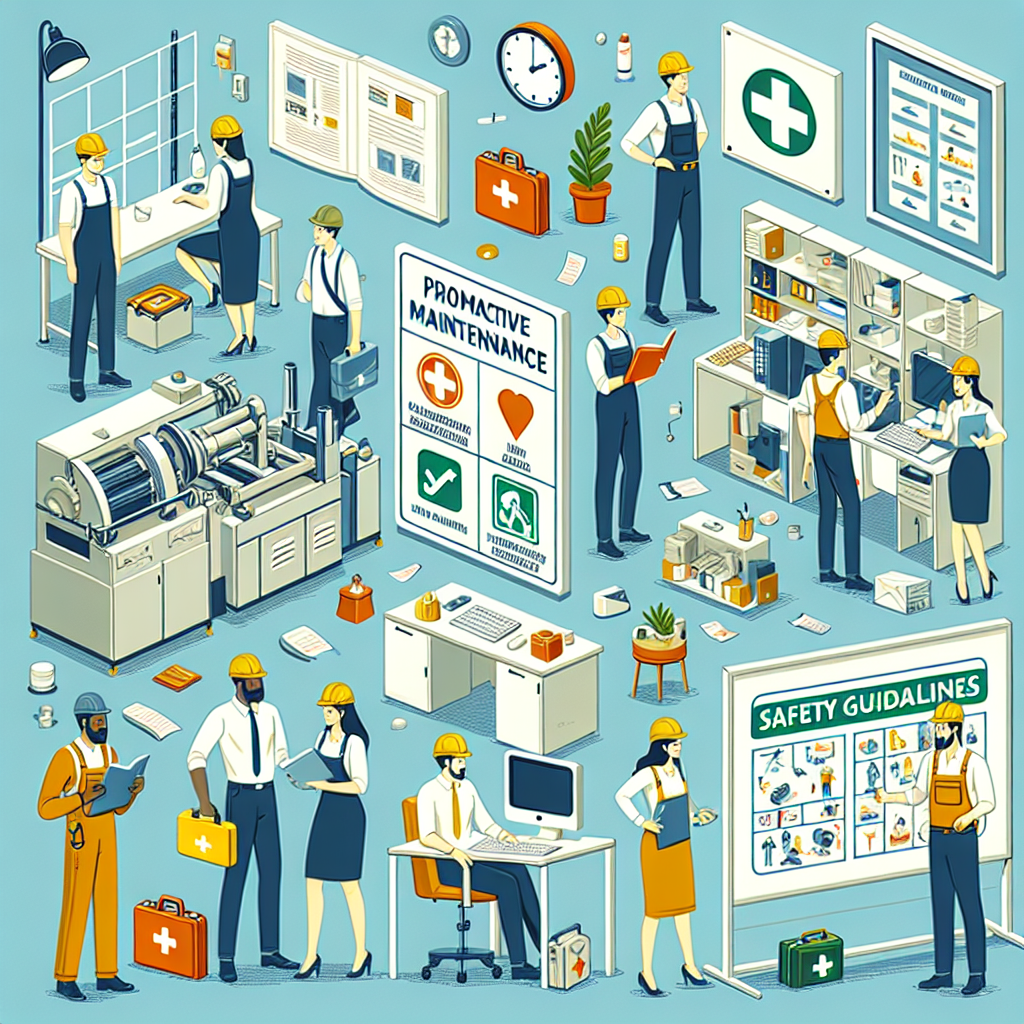
Why Proactive Maintenance is Essential for Ensuring Safety in the Workplace
In any workplace, safety should always be a top priority. Ensuring a safe working environment not only protects employees from harm, but also contributes to a more productive and efficient work environment. One key aspect of maintaining workplace safety is through proactive maintenance.Proactive maintenance involves regularly inspecting, repairing, and maintaining equipment, machinery, and facilities before any issues arise. This proactive approach to maintenance helps to prevent accidents, breakdowns, and other safety hazards in the workplace.
One of the main reasons why proactive maintenance is essential for ensuring safety in the workplace is that it helps to identify and address potential safety risks before they become serious problems. By regularly inspecting and maintaining equipment and machinery, employers can identify any issues that could lead to accidents or injuries, and take corrective action to prevent them from occurring.
In addition, proactive maintenance helps to ensure that equipment and machinery are operating at their optimal level of performance. Regular maintenance can help to extend the lifespan of equipment, reduce the risk of breakdowns, and improve overall efficiency. This not only helps to prevent accidents and injuries, but also helps to maintain a safe and productive work environment.
Furthermore, proactive maintenance can also help to ensure compliance with safety regulations and standards. By regularly inspecting and maintaining equipment and facilities, employers can ensure that they are meeting all necessary safety requirements and standards. This can help to prevent costly fines and penalties, as well as protect the well-being of employees.
Overall, proactive maintenance is essential for ensuring safety in the workplace. By taking a proactive approach to maintenance, employers can identify and address potential safety risks, ensure optimal performance of equipment and machinery, and maintain compliance with safety regulations. By prioritizing safety through proactive maintenance, employers can create a safe and productive work environment for all employees.
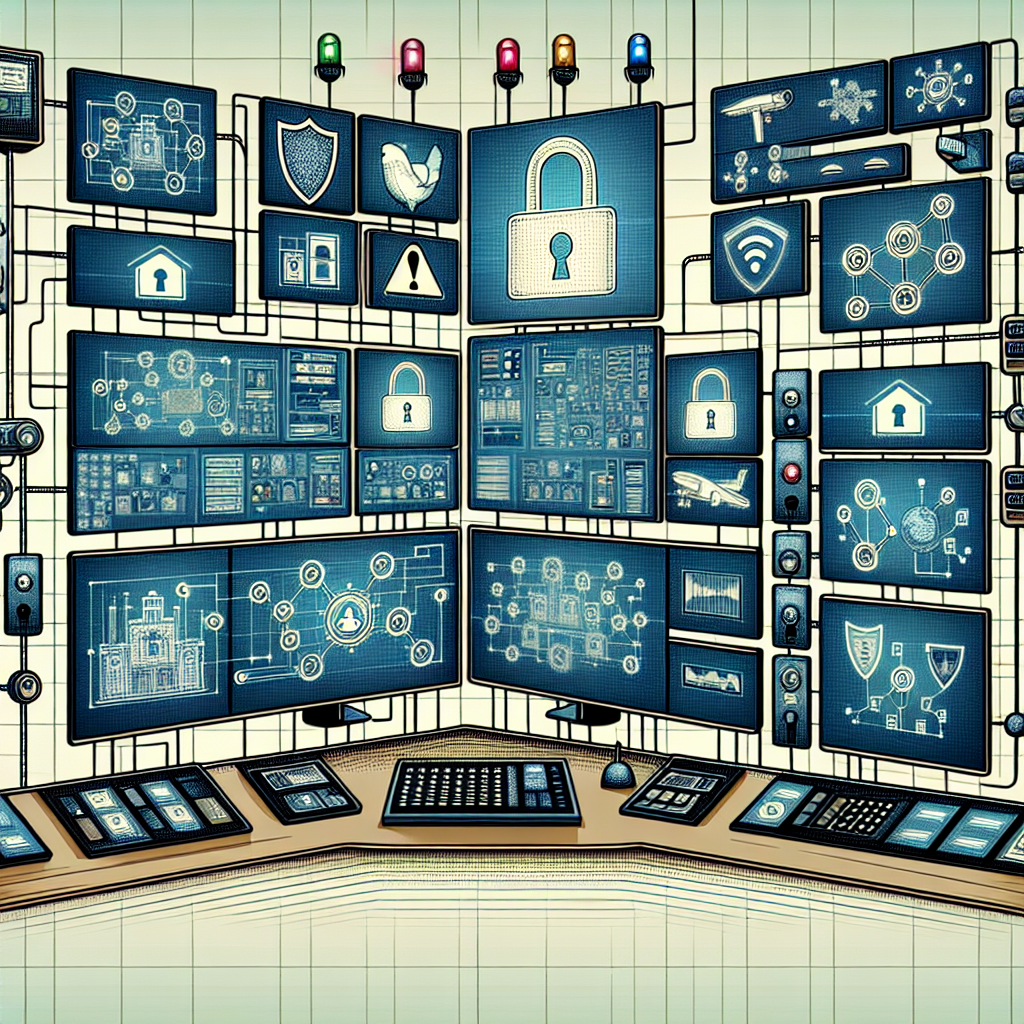
Enhancing Security and Safety with Remote Monitoring Systems
In today’s fast-paced world, security and safety have become top priorities for businesses and individuals alike. With the rise of technology, remote monitoring systems have emerged as a valuable tool in enhancing security and safety measures.Remote monitoring systems allow for continuous surveillance of a property or location, even when physical presence is not possible. These systems use cameras, sensors, and other advanced technology to monitor and record activity in real-time, providing a level of security that was previously unattainable.
One of the key benefits of remote monitoring systems is their ability to deter criminal activity. Studies have shown that the presence of surveillance cameras alone can significantly reduce the likelihood of theft, vandalism, and other criminal acts. In addition, remote monitoring systems can alert authorities immediately in the event of a security breach, allowing for a quick response and resolution to the situation.
Remote monitoring systems are also valuable for enhancing safety measures in a variety of settings. For example, in industrial facilities, these systems can monitor equipment and machinery to ensure they are operating correctly and detect any potential hazards. In healthcare settings, remote monitoring systems can be used to track patient movement and provide assistance in emergencies.
Furthermore, remote monitoring systems can provide peace of mind for homeowners and business owners, allowing them to keep an eye on their property even when they are not physically present. Whether it’s checking in on a vacation home, monitoring a child’s activity while at work, or keeping tabs on a business after hours, remote monitoring systems offer a sense of security and control.
In conclusion, remote monitoring systems are a valuable tool for enhancing security and safety measures in a variety of settings. By providing continuous surveillance, deterring criminal activity, and enabling quick responses to emergencies, these systems offer a level of protection that is essential in today’s world. Whether it’s for a home, business, or industrial facility, remote monitoring systems are a worthwhile investment in ensuring the safety and security of people and property.
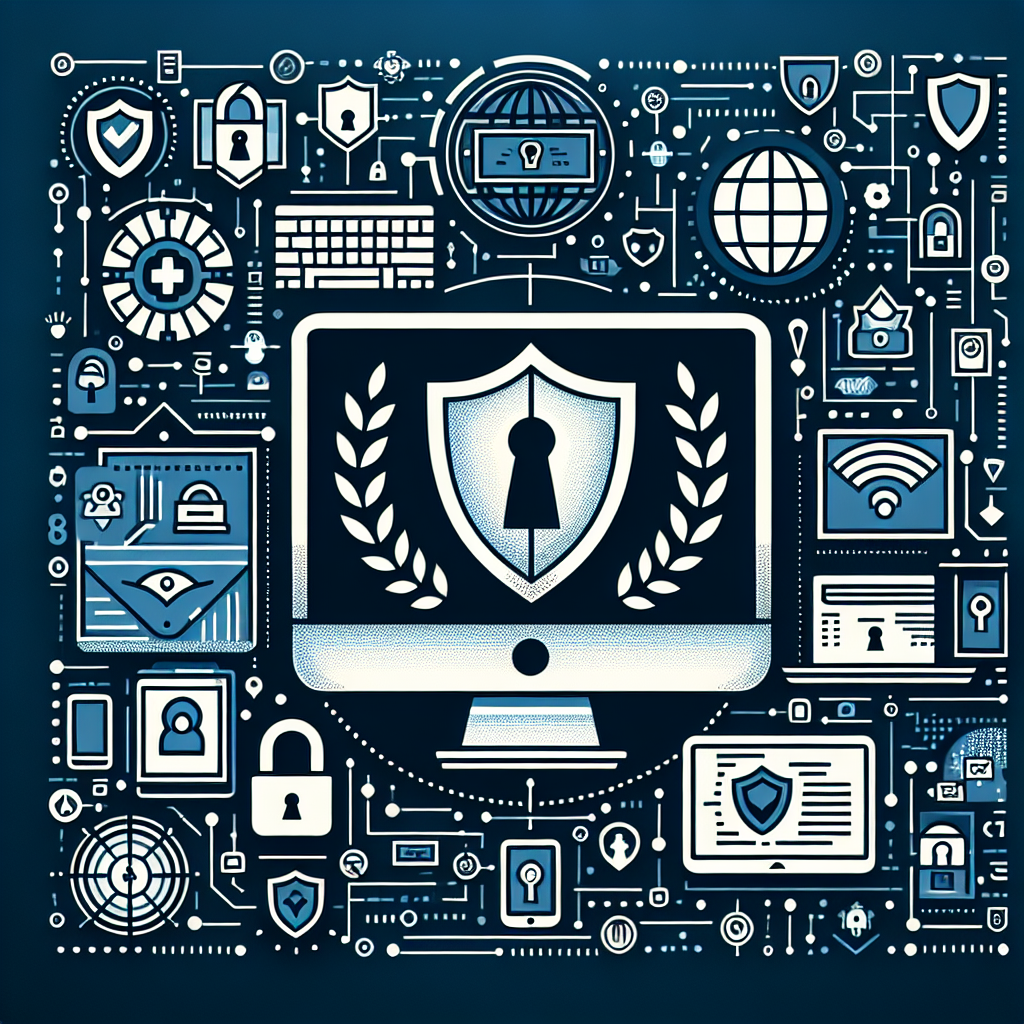
Cybersecurity for Beginners: A Guide to Online Safety
In today’s digital age, cybersecurity has become an essential aspect of our online activities. With the increasing number of cyber threats and data breaches, it is crucial for everyone, especially beginners, to understand the importance of staying safe online.Cybersecurity is the practice of protecting computers, servers, mobile devices, electronic systems, networks, and data from malicious attacks. These attacks can range from viruses and malware to phishing scams and ransomware. By implementing cybersecurity measures, individuals can safeguard their personal information and prevent unauthorized access to their devices and accounts.
For beginners, the world of cybersecurity may seem overwhelming and complex. However, by following some basic guidelines and best practices, anyone can enhance their online safety and protect themselves from potential threats. Here are some tips for beginners to improve their cybersecurity:
1. Use strong passwords: One of the simplest yet most effective ways to enhance cybersecurity is by using strong, unique passwords for each of your online accounts. Avoid using easily guessable passwords like “123456” or “password” and opt for a combination of letters, numbers, and special characters.
2. Enable two-factor authentication: Two-factor authentication adds an extra layer of security to your accounts by requiring a second form of verification, such as a code sent to your phone, in addition to your password. Enable this feature whenever possible to further protect your accounts.
3. Keep your software up to date: Regularly updating your operating system, applications, and antivirus software helps patch security vulnerabilities and protect your devices from potential threats.
4. Be cautious of phishing scams: Phishing scams are fraudulent attempts to obtain sensitive information, such as usernames, passwords, and credit card details, by posing as a trustworthy entity. Be wary of unsolicited emails, messages, or links and avoid providing personal information to unknown sources.
5. Secure your Wi-Fi network: Secure your home Wi-Fi network by setting a strong password, enabling encryption, and disabling remote administration to prevent unauthorized access to your network.
6. Backup your data: Regularly back up your important files and data to an external hard drive or cloud storage service to protect them from loss in the event of a cyber attack or hardware failure.
7. Educate yourself: Stay informed about the latest cybersecurity threats and trends by reading online resources, attending webinars, and following reputable cybersecurity experts on social media.
By following these tips and practicing good cybersecurity habits, beginners can significantly reduce their risk of falling victim to cyber attacks and protect their online presence. Remember, cybersecurity is a shared responsibility, and everyone plays a role in creating a safer online environment. Stay vigilant, stay informed, and stay safe online.
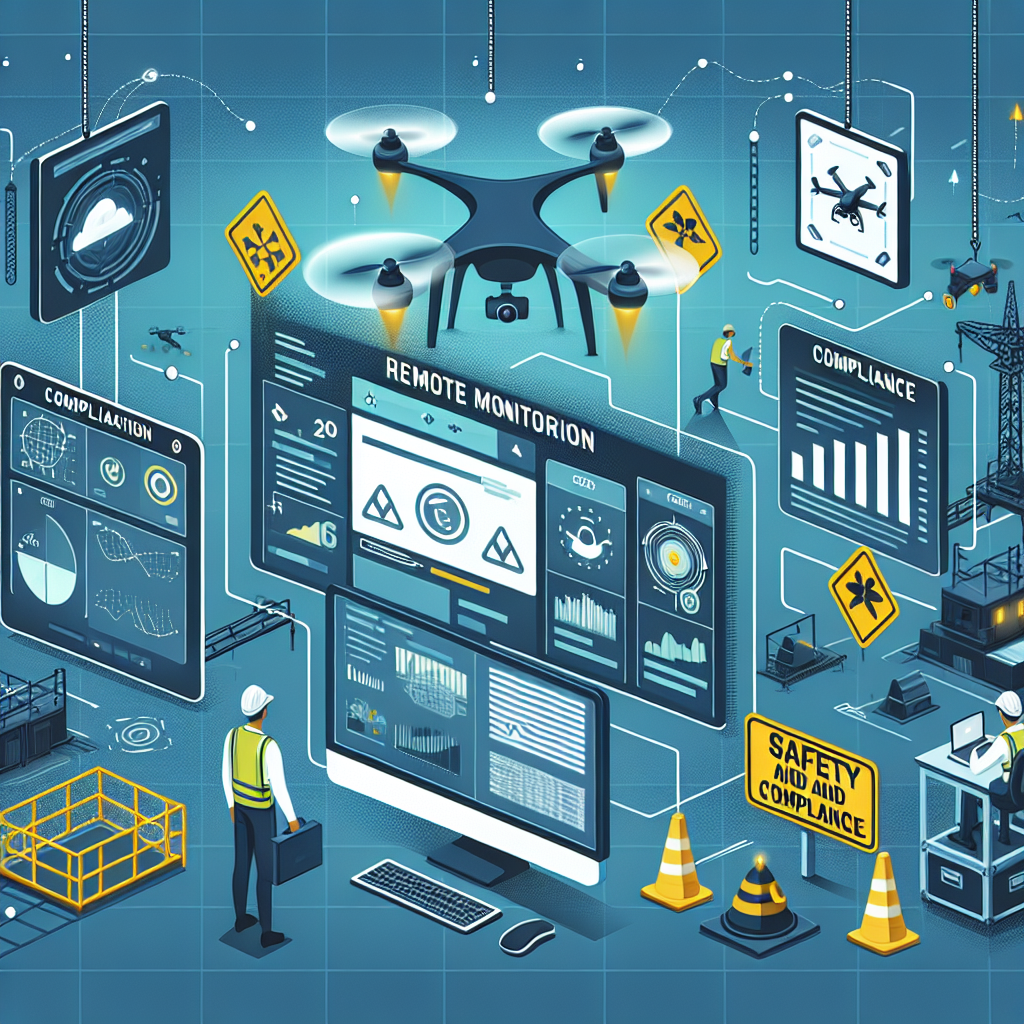
Ensuring Compliance and Safety with Remote Monitoring Technology
In today’s fast-paced world, businesses are constantly looking for ways to improve their operations and increase efficiency. One way they are achieving this is through the use of remote monitoring technology. This technology allows companies to monitor their equipment and processes from anywhere in the world, ensuring compliance with regulations and safety standards.Remote monitoring technology involves the use of sensors and other devices to collect data on various aspects of a business’s operations. This data is then transmitted to a central system, where it can be analyzed and used to make informed decisions. By monitoring equipment remotely, companies can identify potential issues before they become serious problems, preventing costly downtime and ensuring compliance with industry regulations.
One of the key benefits of remote monitoring technology is its ability to enhance safety in the workplace. By continuously monitoring equipment and processes, companies can identify potential safety hazards and take corrective action before accidents occur. For example, if a sensor detects a sudden increase in temperature in a manufacturing plant, employees can be alerted to evacuate the area before a fire breaks out.
In addition to improving safety, remote monitoring technology also helps companies ensure compliance with industry regulations. Many industries have strict guidelines that govern the operation of equipment and processes, and failing to comply with these regulations can result in hefty fines and damage to a company’s reputation. By using remote monitoring technology to track key metrics and ensure compliance with regulations, companies can avoid costly penalties and maintain a good standing within their industry.
Furthermore, remote monitoring technology can also help companies reduce their environmental impact. By monitoring energy usage and emissions levels, companies can identify areas where they can reduce their carbon footprint and improve their sustainability efforts. This not only benefits the environment but can also lead to cost savings for the company in the long run.
In conclusion, remote monitoring technology is a powerful tool that can help companies ensure compliance with regulations, enhance safety in the workplace, and reduce their environmental impact. By investing in this technology, businesses can improve their operations, increase efficiency, and stay ahead of the competition. It is clear that remote monitoring technology is a valuable asset for any company looking to maximize their potential and stay ahead in today’s competitive market.
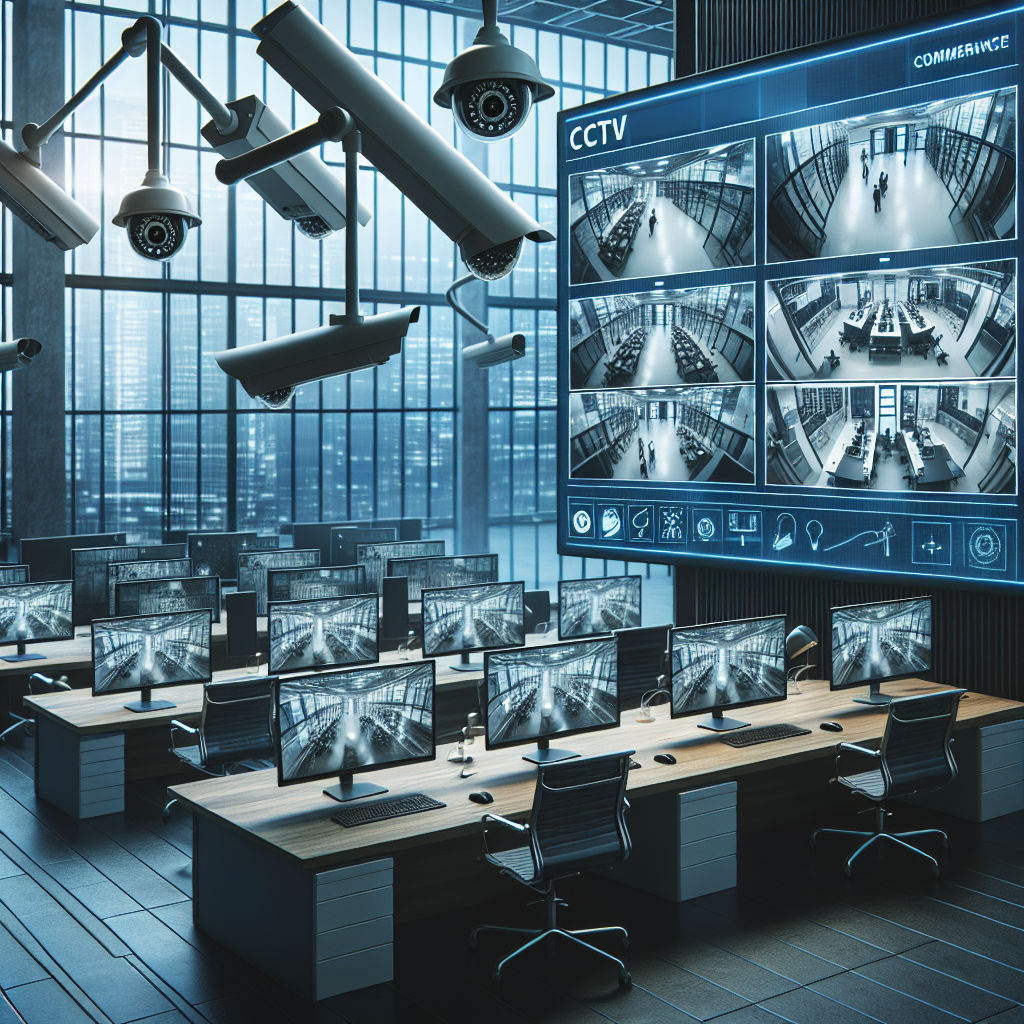
Remote Monitoring: Enhancing Safety and Security in the Workplace
In today’s fast-paced world, technology has revolutionized the way we work and conduct business. One such innovation that is making waves in the workplace is remote monitoring. Remote monitoring is the use of technology to monitor and track activities, processes, and equipment from a distance. This technology has the potential to enhance safety and security in the workplace, making it an invaluable tool for businesses of all sizes.One of the key benefits of remote monitoring is its ability to provide real-time data and insights into what is happening in the workplace. This can help businesses identify potential safety hazards or security risks before they escalate into more serious issues. For example, remote monitoring can be used to track the movement of employees in hazardous areas, detect unauthorized access to sensitive areas, or monitor equipment for malfunctions or failures. By having access to this information in real-time, businesses can take immediate action to address any potential threats and prevent accidents or security breaches from occurring.
Furthermore, remote monitoring can also help businesses comply with safety and security regulations. Many industries have strict guidelines and regulations in place to ensure the safety of employees and protect sensitive information. Remote monitoring can provide businesses with the necessary data and documentation to demonstrate compliance with these regulations, helping to avoid costly fines and penalties.
Additionally, remote monitoring can enhance the overall efficiency of a workplace by providing insights into how processes and equipment are performing. By tracking key performance indicators, businesses can identify areas for improvement and make informed decisions to optimize operations and increase productivity. This can ultimately lead to cost savings and improved profitability for businesses.
Overall, remote monitoring is a powerful tool that can enhance safety and security in the workplace. By providing real-time data and insights, businesses can identify potential risks, ensure compliance with regulations, and improve operational efficiency. As technology continues to advance, remote monitoring will undoubtedly become an essential component of workplace safety and security strategies. Businesses that embrace this technology will be better positioned to protect their employees, assets, and reputation in an increasingly complex and interconnected world.

Cybersecurity for Beginners: Understanding the Basics of Online Safety
Cybersecurity for Beginners: Understanding the Basics of Online SafetyIn today’s digital age, the importance of cybersecurity cannot be stressed enough. With the increasing number of cyber threats and attacks, it is crucial for individuals to understand the basics of online safety to protect themselves and their personal information.
Cybersecurity refers to the practice of protecting computers, networks, and data from unauthorized access, theft, or damage. It involves implementing security measures to prevent cyber attacks and ensure the confidentiality, integrity, and availability of information.
Here are some key concepts and tips for beginners to enhance their online safety:
1. Password Security: One of the most basic yet crucial aspects of cybersecurity is using strong and unique passwords for all your online accounts. Avoid using easily guessable passwords like “123456” or “password.” Instead, create complex passwords that include a mix of letters, numbers, and special characters.
2. Two-Factor Authentication: Enable two-factor authentication (2FA) for your accounts whenever possible. This adds an extra layer of security by requiring a second form of verification, such as a code sent to your phone, in addition to your password.
3. Phishing Awareness: Be cautious of suspicious emails, messages, or websites that may be phishing attempts to steal your personal information. Avoid clicking on links or downloading attachments from unknown sources.
4. Keep Software Updated: Regularly update your operating system, antivirus software, and other applications to patch security vulnerabilities and protect against potential threats.
5. Public Wi-Fi Security: Avoid connecting to public Wi-Fi networks when accessing sensitive information, such as online banking or shopping. If you must use public Wi-Fi, consider using a virtual private network (VPN) to encrypt your internet connection.
6. Social Media Privacy Settings: Review and adjust your privacy settings on social media platforms to control who can see your posts and personal information. Be cautious about sharing too much personal information online.
7. Backup Your Data: Regularly back up your important files and data to an external hard drive or cloud storage to protect against data loss from cyber attacks or hardware failures.
8. Cyber Hygiene: Practice good cyber hygiene by regularly scanning your devices for malware, avoiding clicking on suspicious links, and being mindful of the websites you visit.
By understanding and implementing these basic cybersecurity practices, beginners can significantly reduce their risk of falling victim to cyber attacks and protecting their online safety. Remember, cybersecurity is a shared responsibility, and everyone has a role to play in staying safe and secure online.
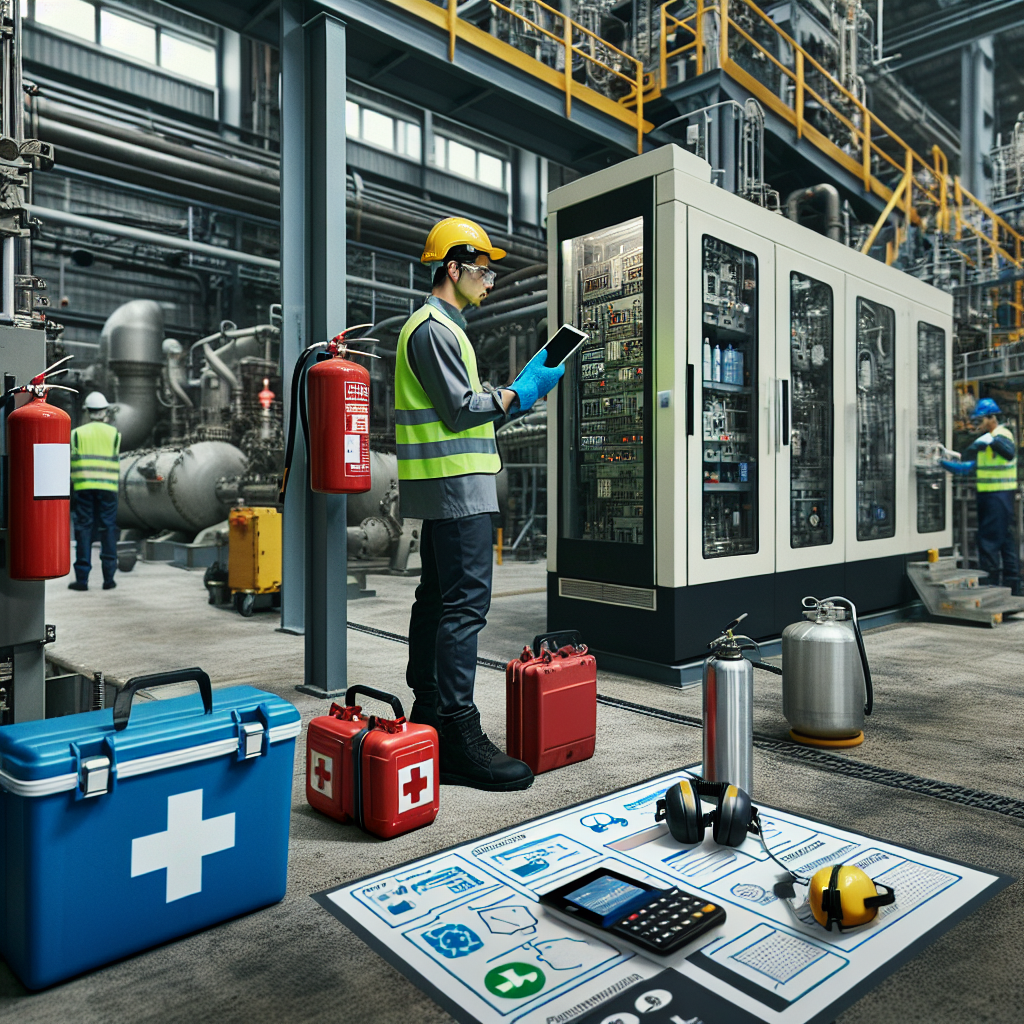
How Proactive Maintenance Can Improve Safety and Compliance in Your Facility
Proactive maintenance is essential for ensuring the safety and compliance of a facility. By taking a proactive approach to maintenance, facilities can reduce the risk of accidents and ensure that all equipment and systems are operating efficiently and in compliance with regulations.One of the key benefits of proactive maintenance is that it allows facilities to identify and address potential issues before they become major problems. By regularly inspecting equipment and systems, facilities can catch issues early on and make repairs or replacements as needed. This can help prevent breakdowns and malfunctions that could pose a safety risk to employees or visitors.
Proactive maintenance also helps facilities stay in compliance with regulations and standards. By staying on top of maintenance tasks and keeping accurate records, facilities can demonstrate to regulatory agencies that they are taking the necessary steps to ensure safety and compliance. This can help prevent fines and penalties for non-compliance and help maintain a positive reputation in the industry.
In addition to improving safety and compliance, proactive maintenance can also lead to cost savings for facilities. By addressing issues early on, facilities can avoid costly repairs or replacements down the line. Regular maintenance can also help equipment and systems operate more efficiently, leading to lower energy costs and longer lifespans for equipment.
To implement a proactive maintenance program in your facility, consider the following steps:
1. Develop a maintenance schedule: Create a schedule for inspecting and maintaining all equipment and systems in your facility. Be sure to include regular inspections, cleaning, and lubrication tasks to keep equipment in good working order.
2. Train staff: Ensure that all staff members are trained on how to properly maintain equipment and perform routine maintenance tasks. This will help prevent accidents and ensure that maintenance is done correctly.
3. Keep accurate records: Keep detailed records of all maintenance tasks performed, including dates, tasks completed, and any issues or repairs made. This will help track the maintenance history of equipment and demonstrate compliance with regulations.
4. Stay informed: Stay up to date on industry regulations and standards to ensure that your facility is compliant. Regularly review maintenance procedures and make adjustments as needed to meet current requirements.
Overall, proactive maintenance is a crucial aspect of ensuring the safety and compliance of a facility. By taking a proactive approach to maintenance, facilities can reduce the risk of accidents, stay in compliance with regulations, and save money in the long run. Implementing a proactive maintenance program can help facilities operate more efficiently and effectively, leading to a safer and more compliant work environment.

The Benefits of Remote Monitoring: How It Can Improve Efficiency and Safety
Remote monitoring technology has revolutionized the way businesses operate, providing a host of benefits that can improve efficiency and safety across various industries. From tracking equipment performance to monitoring employee behavior, remote monitoring offers a wide range of advantages that can help businesses streamline their operations and ensure a safe working environment.One of the key benefits of remote monitoring is the ability to track equipment performance in real-time. By installing sensors and monitoring devices on machinery and equipment, businesses can receive instant updates on their performance, allowing them to identify issues before they escalate into costly breakdowns. This proactive approach to maintenance not only reduces downtime but also extends the lifespan of equipment, ultimately saving businesses both time and money.
Remote monitoring also enables businesses to monitor employee behavior and ensure compliance with safety protocols. By installing cameras and sensors in workspaces, employers can track employee movements and identify any unsafe behaviors or practices. This real-time monitoring can help prevent accidents and injuries, creating a safer working environment for employees.
In addition to improving efficiency and safety, remote monitoring can also help businesses reduce their environmental impact. By tracking energy consumption and waste production, businesses can identify areas where they can cut costs and reduce their carbon footprint. This data-driven approach to sustainability not only benefits the environment but also helps businesses save money in the long run.
Furthermore, remote monitoring allows businesses to access data and analytics from anywhere in the world, providing them with valuable insights that can inform decision-making and drive business growth. By analyzing this data, businesses can identify trends, pinpoint areas for improvement, and make informed decisions that can help them stay ahead of the competition.
Overall, the benefits of remote monitoring are vast and can have a significant impact on a business’s bottom line. From improving efficiency and safety to reducing environmental impact and driving growth, remote monitoring technology offers a wide range of advantages that can help businesses thrive in today’s competitive landscape. By harnessing the power of remote monitoring, businesses can streamline their operations, enhance productivity, and create a safer, more sustainable working environment for their employees.
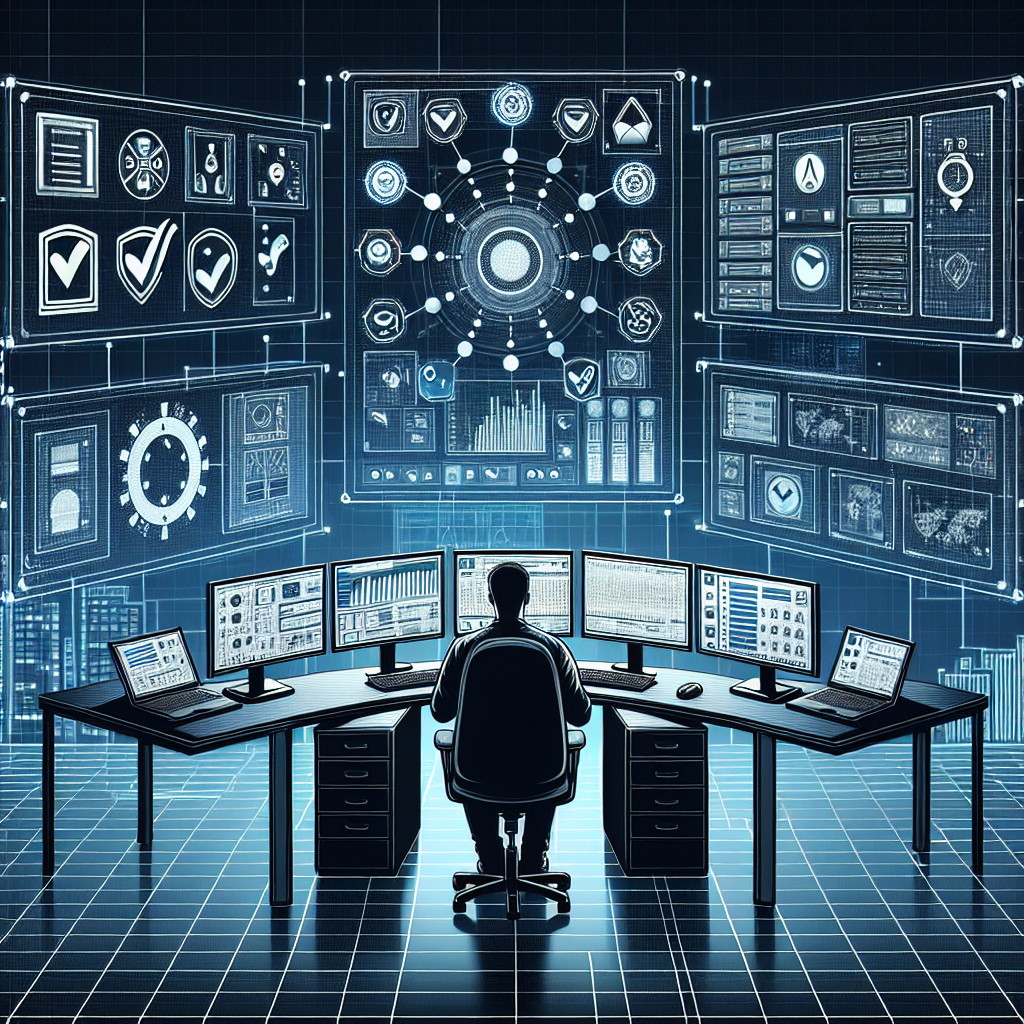
Remote Monitoring: A Vital Tool for Ensuring Safety and Compliance
In today’s fast-paced world, businesses are constantly looking for ways to improve efficiency, cut costs, and ensure compliance with regulations. One tool that has become increasingly popular in achieving these goals is remote monitoring technology.Remote monitoring involves the use of sensors, cameras, and other devices to track and monitor various aspects of a business’s operations from a distance. This technology allows businesses to keep a close eye on their equipment, facilities, and processes without having to be physically present.
One of the key benefits of remote monitoring is the ability to ensure safety and compliance within a business. By constantly monitoring equipment and processes, businesses can quickly detect any potential issues or safety hazards and take immediate action to prevent accidents or violations of regulations.
For example, in industries such as manufacturing or oil and gas, remote monitoring can be used to track the temperature, pressure, and other vital parameters of equipment to ensure they are operating within safe limits. If any abnormalities are detected, alerts can be sent to operators or maintenance personnel to address the issue before it escalates into a major problem.
In addition to safety, remote monitoring also plays a crucial role in ensuring compliance with regulatory requirements. Many industries are subject to strict regulations governing everything from emissions to worker safety, and failing to comply with these regulations can result in hefty fines and legal repercussions.
By using remote monitoring technology to track and record data on a continuous basis, businesses can demonstrate to regulatory authorities that they are taking proactive steps to comply with regulations. This not only helps to avoid penalties but also builds trust with stakeholders and customers who expect businesses to operate ethically and responsibly.
Furthermore, remote monitoring can also help businesses streamline their operations and improve efficiency. By monitoring equipment performance and identifying areas for improvement, businesses can optimize their processes, reduce downtime, and cut costs. This can lead to increased productivity, higher profits, and a competitive edge in the market.
In conclusion, remote monitoring is a vital tool for businesses looking to ensure safety, compliance, and efficiency in their operations. By leveraging the power of technology to monitor and track key aspects of their business from a distance, businesses can stay ahead of potential issues, comply with regulations, and improve their overall performance. Investing in remote monitoring technology is not only a smart business decision but also a necessary step in today’s fast-paced and competitive business environment.
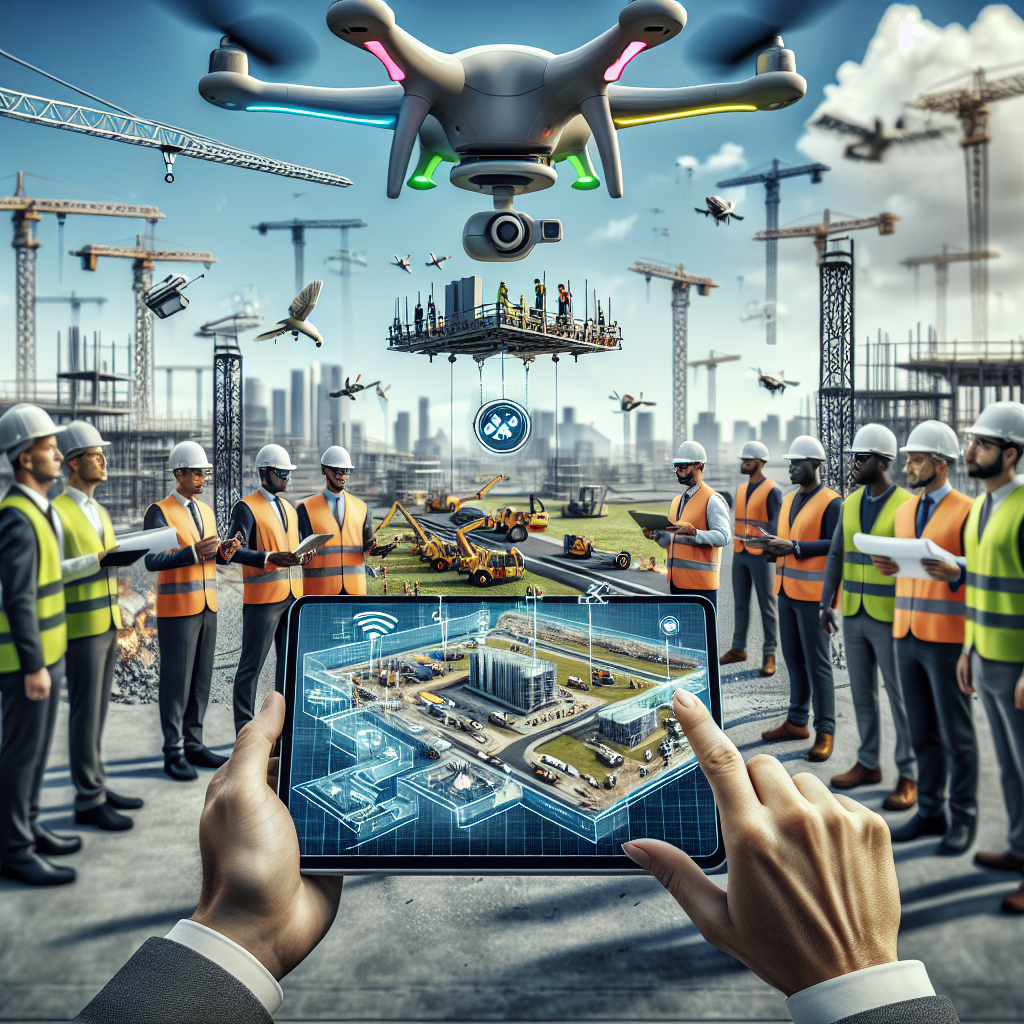
Remote Monitoring: Enhancing Safety and Compliance in the Construction Sector
The construction sector is one of the most high-risk industries, with workers exposed to a wide range of hazards on a daily basis. From working at heights to handling heavy machinery, construction sites can be dangerous environments if proper safety measures are not in place.In recent years, the use of remote monitoring technology has emerged as a valuable tool for enhancing safety and compliance in the construction sector. By leveraging sensors, cameras, and other advanced technologies, construction companies can remotely monitor their worksites in real-time, providing valuable insights into potential risks and compliance issues.
One of the key benefits of remote monitoring is its ability to provide a 360-degree view of the construction site, allowing project managers to identify any safety hazards or compliance violations immediately. For example, sensors can detect unsafe conditions such as excessive noise levels, high levels of dust or fumes, or unauthorized personnel on site, alerting managers to take corrective action before an incident occurs.
Remote monitoring also enables construction companies to track the movement and activities of workers on site, ensuring that they are following proper safety protocols and procedures. For example, wearable technology can monitor workers’ vital signs and movements, alerting supervisors if a worker is in distress or has fallen.
In addition to enhancing safety, remote monitoring can also help construction companies ensure compliance with regulatory requirements. By capturing and storing data on site conditions, worker activities, and equipment usage, companies can easily demonstrate compliance with health and safety regulations and environmental standards.
Furthermore, remote monitoring technology can help construction companies improve productivity and efficiency on site. By providing real-time data on equipment usage, project progress, and resource allocation, managers can identify areas for improvement and make informed decisions to optimize workflows.
Overall, remote monitoring technology is a valuable tool for enhancing safety and compliance in the construction sector. By leveraging advanced sensors and cameras, construction companies can proactively identify risks, ensure compliance with regulations, and improve productivity on site. As the construction industry continues to evolve, remote monitoring will play an increasingly important role in ensuring the safety of workers and the success of construction projects.
